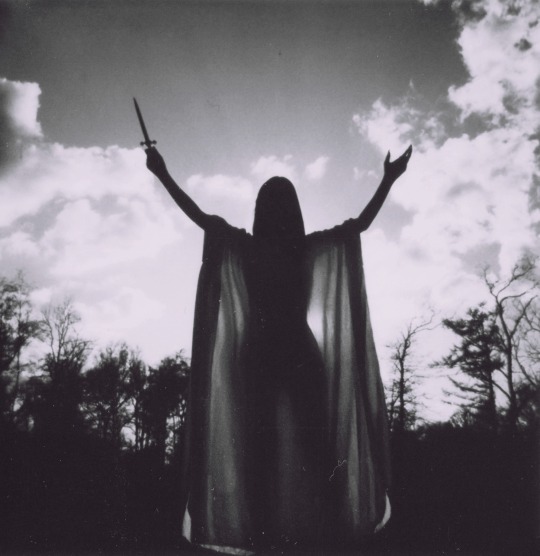#beltane
Text
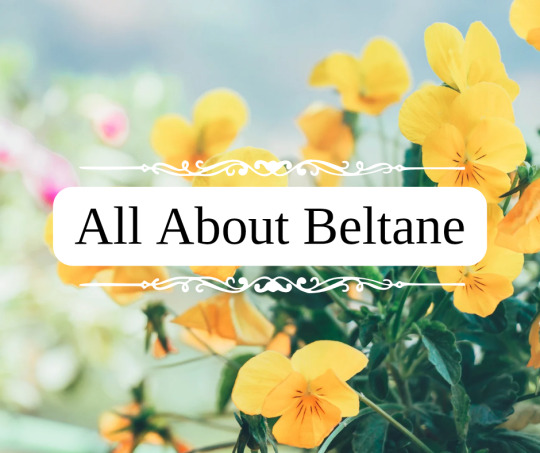
All About Beltane
Beltane, also known as Bealtaine in Irish, is a Gaelic holiday traditionally held on May 1st or the halfway point between the spring equinox and the summer solstice. It is believed to be named after the Celtic sun god Belenus. It was widely observed in Ireland, Scotland, and the Isle Of Man, and is one of the 4 major Celtic fire festivals. It is mentioned in even the earliest Irish literature and marked the beginning of summer and used as the marker to drive cattle into their summer pastures. Although public celebrations have mostly fallen out after the 20th century and many traditions have been mixed with other cultural holidays (such as the Roman holiday May Day), many Celtic Neopagans and Wiccans still celebrate, and many local traditions still continue, causing it to now get a cultural revival.
Traditionally, rituals were held to protect the livestock that moved pastures, along with crops, dairy products, and people, and to encourage growth. It was also important to appease the Aos Sí, or nature spirits/fairies, which were believed to be more active then.
According to early medieval texts in 908, druids would make two bonfires and drive cattle between them to protect them from disease. In the 18th and 19th centuries, bonfires continued to be an important part of the celebrations. Before the bonfires were lit, all hearth fires were put out, and then relit using the fire from the Beltane bonfires after the celebration.
Continuing into the 19th century, cattle were still driven over or between flames, or sometimes around the fires or made to leap over. The people themselves did as well for good luck and protection. Once the fires died down, people would dab themselves with the ashes and sprinkle them over their crops and livestock. Torches from the bonfires would also be brought home and carried around the home or boundaries, and also used to relight the hearth.
Food was also an important part of the Beltane festival, and usually included a feast of lamb, which, historically, was sacrificed. In 1769, it was written that a hot drink, called a caudle, made of eggs, butter, oatmeal, and milk was served, along with tossing a bit on the ground as an offering. A Beltane Bannock, a type of oatmeal cake, was also written to be important and had a few traditions around it.
In one tradition, the Beltane Bannock had nine knobs on it and each person would take the bannock and face the fire, proceeding to break off the knobs of bannock one at a time and tossing them behind their shoulder as an offering to the spirits for protection over their livestock and from predators (one for the cow, one for the sheep, one for the fox, etc). Afterwards, they would drink the caudle.
According to other 18th century writers, there was another Beltane Bannock tradition where the bannock would be cut into slices and one was marked with charcoal. The slices were then thrown into a bonnet and everyone would take one out while blindfolded. According to one writer, whoever pulled the marked bannock slice had to leap through the fire 3 times. According to another, the person would instead be pretend-thrown into the fire and for some time afterward people would talk about the person as if they were dead. This may have always been symbolic, or it may have been a tradition from a time where actual human sacrifice was used. This tradition was also near identical to May Day traditions that occurred in Wales and other parts of Europe, however.
Other traditions including flowers and plants were also observed, especially ones that evoked fire. Documents from the 19th century cite that yellow and white flowers, such as primrose, rowan, hawthorn, gorse, hazel, and marsh marigold was used and placed at doorways and windows. Sometimes they were strewn into garland, and other times they were made into bouquets, made into crosses, or fastened to them. They were also fastened to cows and milking/butter equipment.
Decorating a May Bush or May Bough was also a widespread tradition, and it usually consisted of a small tree or branch (typically hawthorn, rowan, holly, or sycamore) decorated with bright flowers, ribbons, candles, painted shells or egg shells from Easter, and more. In some traditions they also decorated it with gold and silver May Balls, which were hurling balls, that were then either given out to children or gifted to winners of a hurling match. It was also known as the only acceptable time to cut a thorn tree, as they were associated with fairies and may have also been a relic of worshipping tree spirits. It would either be decorated where it grew, or branches hung over windows, doors, roofs, and barns either inside or outside. Traditionally, it was the responsibility of the eldest of the house to decorate it.
The tree was usually left up until May 31st, but in some traditions it would be burned in the festival bonfire after singing and dancing around it. In Dublin and Belfast, May Bushes were brought into town and decorated by the whole neighborhood, with each neighborhood competing for the most beautiful bush. These competitions could also lead to neighborhoods attempting to steal others May Bushes, which eventually led to the May Bush being outlawed in Victorian times.
Appeasing the fairies was also a big part in Beltane celebrations, with many traditions revolving around offerings to the fairies and also warding them off, as there were many fears around them stealing dairy. One protection tradition was to leave 3 black coals under the butter churn. Another was to hang May Boughs on the milk pails. And yet another was to hang cattle tails in the barns. Flowers were also used to decorate the cattle's horns for good luck.
Farmers would also lead a procession around the boundaries of the farm and would "carry with them seeds of grain, implements of husbandry, the first well water, and the herb vervain (or rowan)", stopping at the four cardinal points of direction starting at the east, and performing rituals towards each direction at each stop. These processions were said to bring protection of their farm produce and encourage fertility. Some people also made the sign of the cross using milk on the backside of cattle for good luck.
As for fairy offerings, one tradition was to pour milk or leave food at places associated with the fairies such as "fairy trees". In Ireland, cattle were brought to "fairy forts" where a small amount of their blood was poured into the earth with prayers of the herd's safety. Sometimes, the blood would be left to dry and then be burnt.
Visiting holy wells was also a popular way to celebrate Beltane. Visitors would walk sunwise, moving from east to west, around the well while praying for health. They would then leave offerings of coins or cloth. The first water drawn from the well on Beltane was thought to be especially potent, and would bring good luck to the person who drew it.
Morning dew on Beltane was also thought to bring goodluck and health, and maidens would wash their face with it or roll in it at dawn or before sunrise on Beltane. It was also collected in a jar, left in sunlight, and then filtered. The dew was said to increase sexual attractiveness, maintain youthfulness, protect from sun damage, and ensure skin health during the ensuing year.
Modern day celebrations may vary from these more traditional festival activities, but many choose to incorporate or take inspiration from the traditions at least. Popular traditions still revolve around bonfires, feasts, decorating a May Bush, and focusing on protection and growth.
Beltane Associations
Colors - yellow, white, red, green
Food - lamb, milk and dairy, beef, bannocks, caudle, cakes
Animals - cattle, sheep, other herd animals
Items - primrose, rowan, hawthorn, gorse, hazel, marsh marigold, holly, sycamore, yellow and white flowers, flower garland, greenery, morning dew, dairy products
Crystals - citrine, fire agate, fire opal, carnelian, red and yellow jasper
Other - protection, fertility, good luck, fire, smoke, ash, sun, bonfires, farming
Ways To Celebrate
light a bonfire
jump over or dance around a bonfire
decorate a May Bush or May Bough
craft and hang flower garland
bake Beltane Bannocks
collect morning dew
create some caudle
ward and protect your home or property
leave offerings for the fairies
focus on protection, growth, and luck magic
enjoy time in the sun
have a feast
create a bouquet out of yellow and white flowers
visit a farm or petting zoo
#beltane#beltaine#bealtaine#celtic#gaelic#irish#scottish#pagan#witch#witchy#wicca#may day#magick#magic#magickal#grimoire#tradition#celebrate#bonfire#fire festival#witchcraft#spiritual#witchblr#witch community#paganism#pagan witch#celtic paganism#paganblr#about#dairy
26 notes
·
View notes
Text
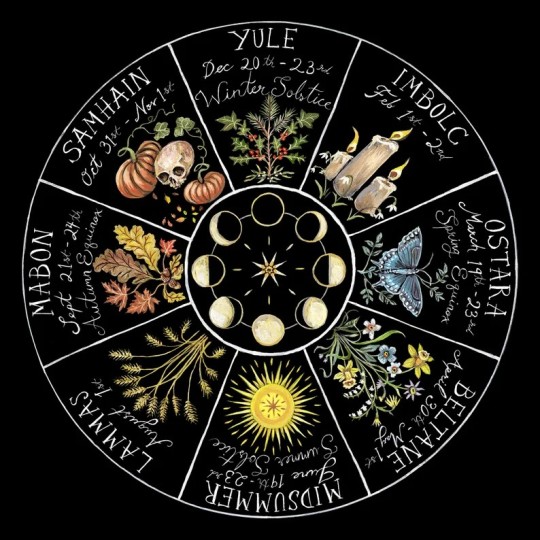
Source
#wheel of the year#etsy#print#yule#imbolc#ostara#beltane#midsommar#midsummer#lammas#mabon#samhain#pagan witch#pagan#paganism#paganblr#witch
5K notes
·
View notes
Text

happy beltane & may day! 🌿
#my art#artists on tumblr#illustration#art#beltane#bealtaine#folk art#procreate#cottagecore#maypole#may day#quilt borders#goat
11K notes
·
View notes
Text
Arthur is send to the druids to spy on their leader.
Arthur: But father! You said the druids are "free spirits". What if they demand "favors"?
Uther: you will do whatever is necessary for Camelots safety
Arthur: *bows awkwardly* yes, father.
Later
Merlin: so... You want to become a druid
Arthur: yes
Merlin: ... Okay. :) want some food? You're coming right in time for Beltane. Do you want to partake?
Arthur: I... I have a choice?
Merlin: who in their right mind would come here if they thought they didn't? No no. You can spend the time in your tent If you prefer.
Arthur: *looking at Merlin* or yours?
Merlin: *scanning arthur Back* or mine
Later
Arthur, in his mind: yes, I am doing all of this for Camelot. I am learning all their ways and become part of the tribe. I am doing my best performances in every daily task! I will become the perfect bride to their leader....
Uther, upon meeting Arthur: and what have you learned about their plans against camelot?
Arthur, flower crown in hair: their what
2K notes
·
View notes
Text


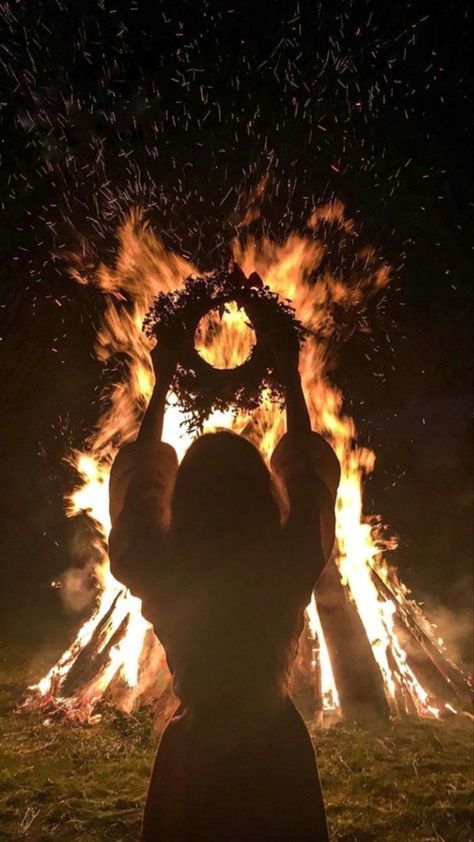



Beltane (May 1st) is almost here, we celebrate spring being at its peak and everything around us being in bloom.
The sun is shining bright again, and the days are now longer.
Beltane correspondences:
Symbols | bonfire, lots of candles, sun, flowers and flower crowns, maypoles, colored ribbons
Colors | yellow, white, green, pink, reds
Spells | fertility, love, cleansing, spellss for creativity and beauty
Crystals | rose quartz, carnelian, jasper
Herbs and flowers | tulips, violets, mint, rosemary
Foods to make | salad, cake or pie, dishes with honey, breads, nuts
How to celebrate | Light a bonfire, go out in nature, make love, dancing, make a maypole
#bealtaine#beltane#mayday#witchy#witchy things#witchyvibes#witches#witch#whimsigoth#whimsigothic#witchythings#moon#whimsical#witchcraft#witch aesthetic#witch community#witchcraft community#witches of tumblr#magick#pagan#spring#wheel of the year#maypole
2K notes
·
View notes
Photo

Hello witches!
I bring you the 2023 calendar for the remaining months ☆゚. * ・ 。゚
How are you holding up mid-mercury retrograde?
This year I just added the Planet Oppositions because there are a few of them in the later months of the year and I wanted to research them.
This is a Northern Hemisphere calendar and specific dates may vary due to different time zones, so always do your research for your specific region.
And if you find any mistakes or anything do add it if you reblog, so I can keep it in mind for future calendars!
See you in the full moon!!
#witches calendar#moon#witch#witchcraft#wheel of the year#pagan#new moon#full moon#zodiac signs#sun#witchystuff#beltane#samhain#calendar 2023#2020#planets#potion#spell
1K notes
·
View notes
Text
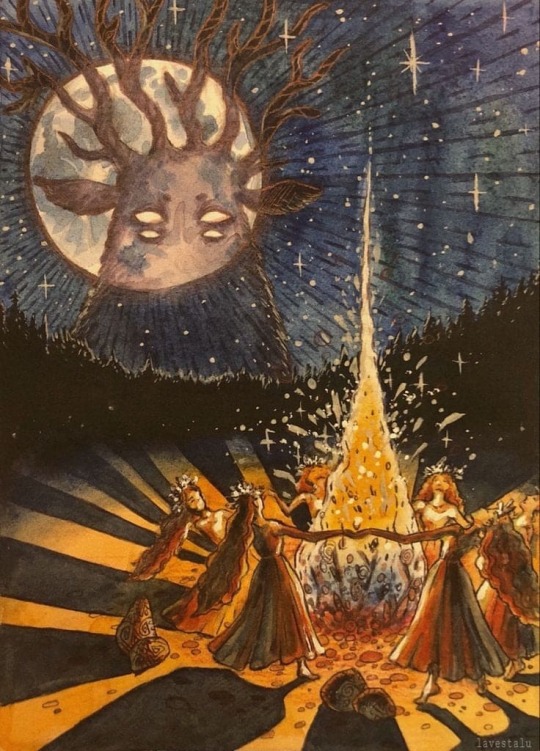
Artist:
Lavestalu
“Walpurgis Night”
✨🌜🔥🌛✨
902 notes
·
View notes
Text
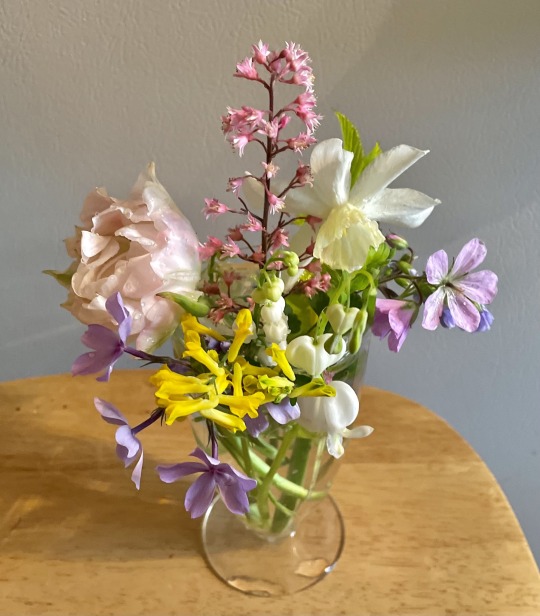
Flowers from the garden on a rainy day.
1K notes
·
View notes
Photo
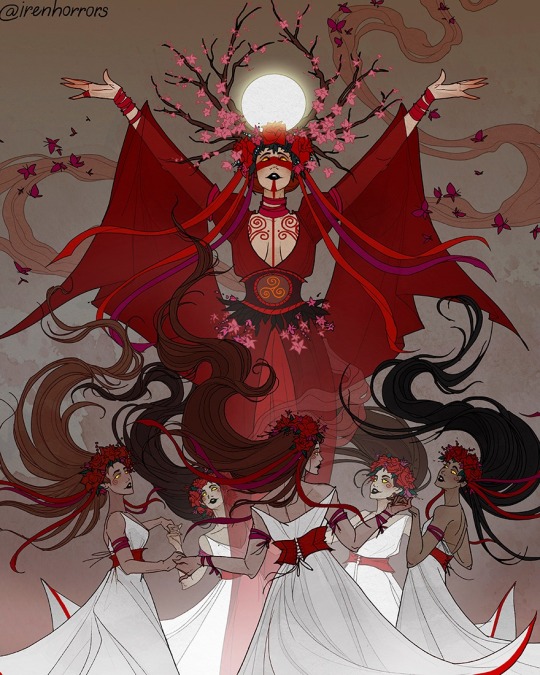


Beltane, Walpurgis Night (Walpurgisnacht), and May Day illustrations by Iren Horrors
This artist on Instagram
#art#illustration#digital art#dark art#pagan#witch#beltane#walpurgisnacht#may day#fantasy#mythology#folklore#demon#wings#horns
1K notes
·
View notes
Text
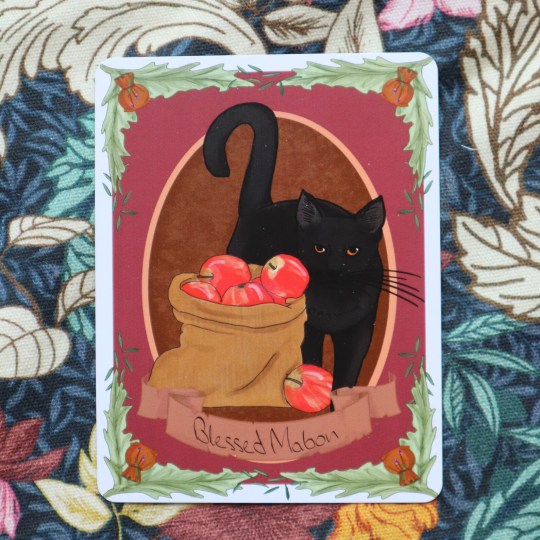


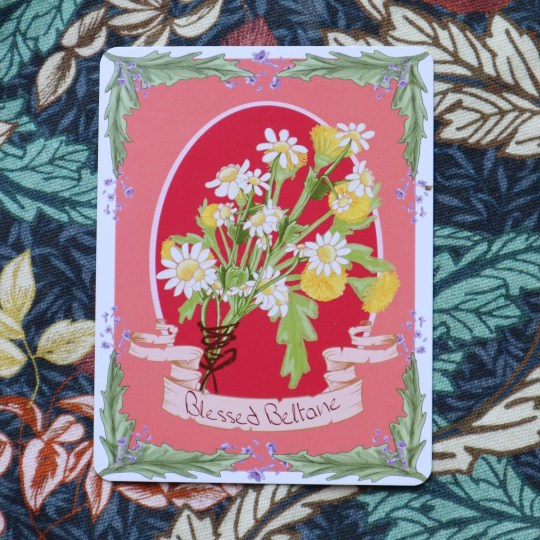


Wheel of the Year Art Prints by ofcraftsandcurios
Mabon // Lughnasadh // Litha // Beltane // Ostara // Imbolc
#art#art print#wheel of the year#pagan#pagan holidays#mabon#lughnasadh#litha#beltane#ostara#imbolc#samhain#yule#witchy#witchcraft#witchy art#drawing#illustration
166 notes
·
View notes
Text
Sabbats Masterpost
The History of Samhain
Samhain Facts
Samhain Correspondences
Samhain Crystals
Samhain Colors
Samhain Plants
Samhain Incense & Oils
Samhain Animals
Samhain Foods
Samhain Ritual & Magick
Samhain Deities
Samhain Altar Ideas
Samhain Activities
Last Minute Samhain Ideas
----------------------------------------
The History of Mabon
Mabon Facts
Mabon Correspondences
Mabon Crystals
Mabon Colors
Mabon Plants
Mabon Oils & Incense
Mabon Animals
Mabon Foods
Mabon Ritual & Magick
Mabon Deities
Mabon Altar
Mabon Activities
Last Minute Mabon Ideas
-----------------------------------
Lughnasadh/Lammas History
Lughnasadh/Lammas Facts
Lughnasadh/Lammas Correspondences
Lughnasadh/Lammas Crystals
Lughnasadh/Lammas Colors
Lughnasadh/Lammas Plants
Lughnasadh/Lammas Incense & Oils
Lughnasadh/Lammas Animals
Lughnasadh/Lammas Food
Lughnasadh/Lammas Ritual & Magick
Lughnasadh & Lammas Deities
Lughnasadh & Lammas Altar Ideas
Lughnasadh & Lammas Activities
Last minute Lammas Ideas
----------------------------------------
Litha History
Litha Facts
Litha Correspondences
Litha Crystals
Litha Incense & Oils
Litha Colors
Litha Plants
Litha Animals
Litha Foods
Litha Deities
Litha Altar Ideas
Litha Ritual & Magick
Litha Activities
Last Minute Litha Ideas
-----------------------------------------
The History of Beltane
Beltane Facts
Beltane Correspondences
Beltane Incense & Oils
Beltane Colors
Beltane Crystals
Beltane Plants
Beltane Animals
Beltane Altar
Beltane Food
Beltane Deities
Beltane Ritual & Magick
Beltane Activities
Last Minute Beltane Ideas
----------------------------------
Ostara History
Ostara Facts
Ostara Correspondences
Ostara Colors
Ostara Crystals
Ostara Incense & Oils
Ostara Plants
Ostara Animals
Ostara Food
Ostara Altar Ideas
Ostara Ritual & Magick
Ostara Deities
Ostara Activities
Last Minute Ostara Ideas
-----------------------------
The History of Imbolc
Imbolc Facts
Imbolc Correspondenses
Imbolc Colors
Imbolc Crystals
Imbolc Incense & Oils
Imbolc Plants
Imbolc Animals
Imbolc Food
Imbolc Altar
Imbolc Ritual & Magick
Imbolc Deities
Imbolc Activities
Last Minute Imbolc Ideas
--------------------------------------
The History of Yule
Yule Facts
Yule Correspondences
Yule Crystals
Yule Colors
Yule Plants
Yule Incense & Oils
Yule Animals
Yule Foods
Yule Ritual & Magick
Yule Deities
Yule Altar
Yule Activities
Last Minute Yule Ideas
#sabbat#esbat#samhain#mabon#lammas#lughnasadh#wicca#witch#pagan#heathen#shaman#beginner witch#litha#beltane#yuichiro matsumoto#ostara#imbolc
3K notes
·
View notes
Text

✨🌱🌸 Blessed Beltane 🌸🌱✨
#witch#witchcraft#pagan#nature#witchy#magic#traditional witchcraft#magick#wicca#witchblr#witchy woman#witches of tumblr#wiccan#Beltane#walpurgisnacht#walpurgis night#sabba#sabbath
552 notes
·
View notes
Text
Witchcraft websites: “Ostara is a great time to plant seeds and prepare the garden!”
My home at this time of year:

#happy spring equinox!#personal#pagan holidays#holidays#spring#spirituality#heathenry#witchcraft#paganism#polytheism#pagan#pagan festivals#ostara#beltane
109 notes
·
View notes
Photo

The Pagan Series 17
512 notes
·
View notes
Text

@paperwitchco
#litha#ostara#beltane#yule#imbolc#manbon#lammas#lughnassadh#autumn equinox#spring eqinox#summer solstice#winter solstice#sabbat#wiccan sabbat#witches sabbat#wheel of the year#cakes and ale#witchblr#witches of tumblr#witchcraft#wicca#pagan#witchy#witchy things#baby witch#kitchen witch#kitchen witchcraft#hearth witch#hearth witchcraft
79 notes
·
View notes
